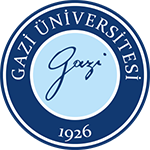ABSTRACT
Purpose:
To determine the maternal complications and the neonatal outcome of triplet gestation and to compare the data with those from twins and singletons matched for gestational age
Methods:
In this retrospective chart review, 35 triplet pregnancies were compared with twin and singleton pregnancies that delivered closest to the sets of triplets under review. Statistical analyses were performed with chisquared tests and Student’s ttest; p values less than 0.05 were considered significant.
Results:
Maternal age was significantly higher in triplets and twins compared to singletons: 27.4 ±4, 27.4 ±4.5, and 24 ±5.1, respectively (p<0.001). 30 /35 (85.7%) of the triplets were delivered by cesarean section, whereas 25/35 (73.5%) of the twins and 13/35 (34.2%) of the singletons were delivered by cesarean (p<0.001). There was increased maternal morbidity in triplet pregnancies like uterine atony, anemia, and febrile morbidity, but they did not reach statistical significance. Although all deliveries were preterm, in the evaluation of neonatal outcomes by 1 and 5 minute Apgar scores, singletons’ 1 and 5 minute Apgar scores were significantly higher than those of twins and triplets (p<0.005). However, there was no statistically significant difference between twins and triplets according to their Apgar scores (p>0.05).
Conclusion:
Iatrogenic multiple births are increasing as the use of assisted conception techniques expands. Increased obstetric risk such as threatened preterm delivery and cesarean section rate could be observed. The risks of maternal morbidity and obstetric complications are increased in triplet pregnancies. Therefore, we concluded that this study could be useful in counseling patients with respect to the anticipated perinatal outcome of triplet pregnancies.



